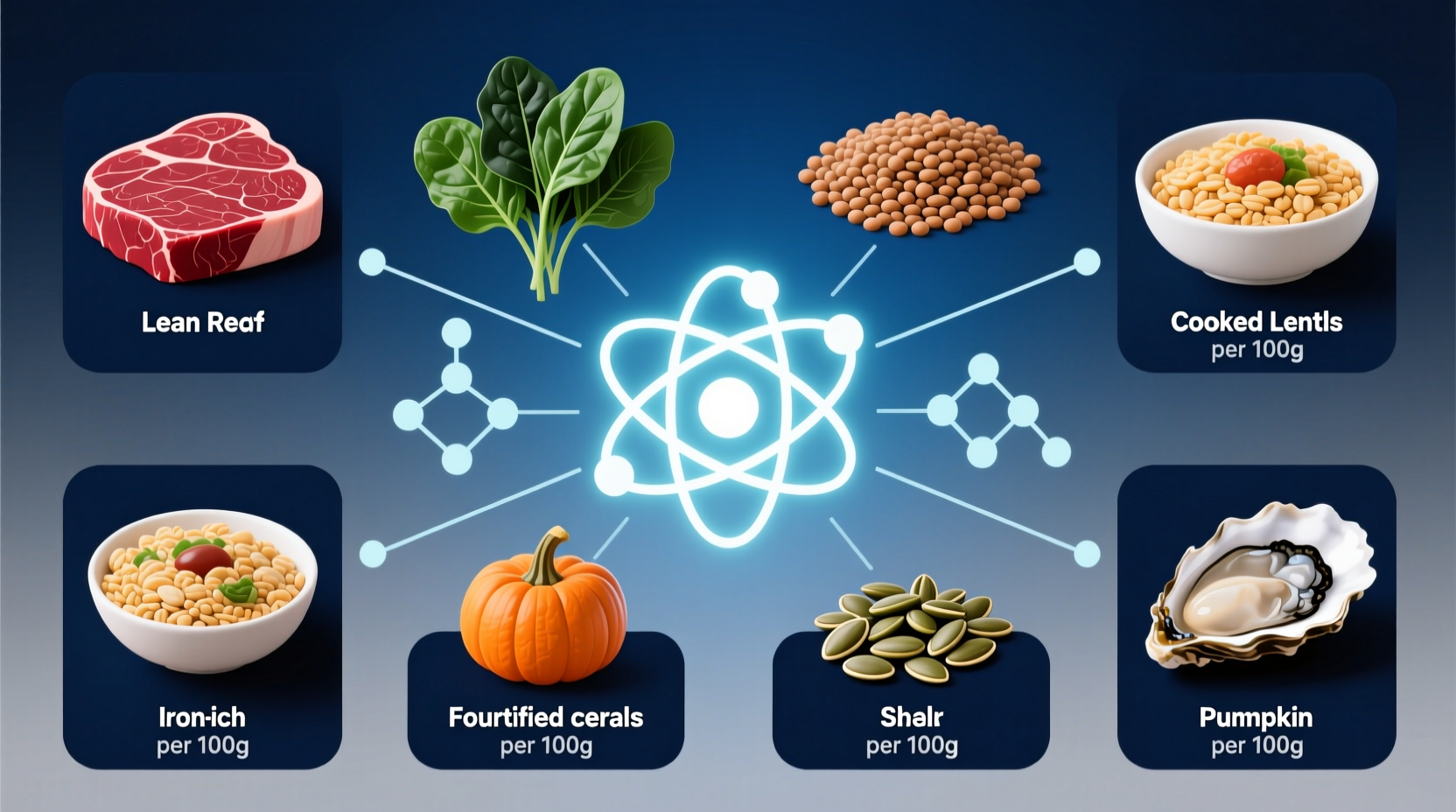The top iron-rich foods are organ meats (especially liver), shellfish (particularly oysters and clams), and legumes (like lentils and soybeans). A 3-ounce serving of cooked beef liver provides 5.2 mg of iron (29% of daily value), while the same amount of oysters delivers 8 mg (44% DV). For plant-based options, 1 cup of cooked lentils offers 6.6 mg (37% DV).
Why Iron Matters for Your Health
Iron plays a critical role in oxygen transport through hemoglobin and supports cellular energy production. Without adequate iron, you may experience fatigue, weakened immunity, and impaired cognitive function. Women of childbearing age need 18 mg daily, while men require 8 mg. Pregnant women need 27 mg to support fetal development.
Iron Content Showdown: Animal vs. Plant Sources
Not all iron is created equal. Heme iron from animal sources has 15-35% absorption rates, while non-heme iron from plants has only 2-20% absorption. This difference significantly impacts how much iron your body actually utilizes from different foods.
| Food (100g serving) | Iron Content (mg) | % Daily Value | Type |
|---|---|---|---|
| Cooked beef liver | 6.8 | 38% | Heme |
| Oysters (cooked) | 9.2 | 51% | Heme |
| Lentils (cooked) | 3.3 | 18% | Non-heme |
| Pumpkin seeds | 8.8 | 49% | Non-heme |
| Spinach (cooked) | 3.6 | 20% | Non-heme |
Data sourced from the USDA FoodData Central, the most comprehensive nutritional database maintained by the United States Department of Agriculture.

Maximizing Iron Absorption: Practical Strategies
Pairing iron-rich foods with vitamin C dramatically increases absorption. A study published in the American Journal of Clinical Nutrition found that 63 mg of vitamin C (about one orange) can triple non-heme iron absorption from plant foods. Try these effective combinations:
- Lentil soup with lemon juice
- Spinach salad with strawberries
- Bean burritos with bell peppers
Avoid drinking coffee or tea within an hour of iron-rich meals, as polyphenols can reduce absorption by 50-60% according to research from the NIH Office of Dietary Supplements.
Daily Iron Requirements by Life Stage
Your iron needs vary significantly based on age, gender, and life circumstances. The National Academy of Medicine established these recommended daily allowances:
- Men (19+ years): 8 mg
- Women (19-50 years): 18 mg
- Pregnant women: 27 mg
- Lactating women: 9-10 mg
- Vegans/vegetarians: 1.8x higher due to non-heme iron absorption rates
Vegetarians need nearly twice as much iron as meat-eaters because plant-based iron has lower bioavailability. This doesn't mean you need to eat twice as much food—it means being strategic about food combinations and preparation methods.
Building Iron-Rich Meals: Practical Examples
Creating balanced meals that maximize iron intake doesn't have to be complicated. Here are three simple approaches that deliver substantial iron while being delicious:
- Breakfast boost: Steel-cut oats (1.5 mg iron) cooked with dried apricots (0.8 mg) and pumpkin seeds (2.5 mg), topped with orange slices for vitamin C
- Lunch powerhouse: Lentil salad (6.6 mg) with spinach (1.2 mg), chickpeas (1.4 mg), and lemon-tahini dressing
- Dinner solution: Grass-fed beef stir-fry (2.7 mg) with broccoli (0.7 mg) and red bell peppers, served over quinoa (1.5 mg)
Soaking and sprouting legumes can increase iron bioavailability by reducing phytates. The National Center for Biotechnology Information reports that sprouting mung beans increases iron availability by 40%.
When to Consider Supplementation
Dietary iron should be your primary source, but certain situations may warrant supplementation under medical supervision:
- Diagnosed iron deficiency anemia
- Heavy menstrual bleeding
- Gastrointestinal conditions affecting absorption
- Post-bariatric surgery patients
Never self-prescribe iron supplements—excess iron can cause serious health complications. Always consult with a healthcare provider before starting supplementation.











 浙公网安备
33010002000092号
浙公网安备
33010002000092号 浙B2-20120091-4
浙B2-20120091-4